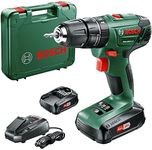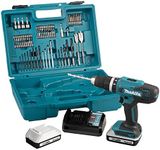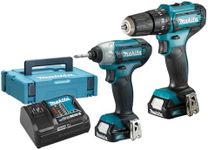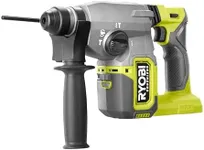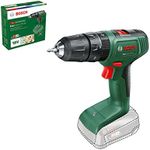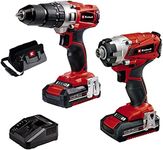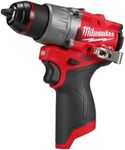Buying Guide for the Best Cordless Drills
When choosing a cordless drill, it's important to consider how you plan to use it. Whether you're a DIY enthusiast, a professional contractor, or someone who just needs a tool for occasional home repairs, the right cordless drill can make your tasks easier and more efficient. Understanding the key specifications will help you select a drill that meets your needs and provides the best performance for your projects.VoltageVoltage in a cordless drill indicates the power of the motor. Higher voltage means more power, which is useful for heavy-duty tasks like drilling into hard materials. Cordless drills typically range from 12V to 20V. For light tasks such as assembling furniture or drilling into softwood, a 12V drill is usually sufficient. For more demanding tasks, like drilling into masonry or metal, a 18V or 20V drill would be more appropriate. Consider the types of projects you will be working on to determine the right voltage for you.
Battery TypeThe battery type affects the drill's performance and runtime. Most modern cordless drills use Lithium-Ion (Li-Ion) batteries, which are lighter, charge faster, and have a longer lifespan compared to older Nickel-Cadmium (NiCd) batteries. If you need a drill for frequent use, a Li-Ion battery is a better choice due to its efficiency and durability. For occasional use, a NiCd battery might suffice, but keep in mind it is heavier and may not hold a charge as long.
Battery Capacity (Ah)Battery capacity, measured in ampere-hours (Ah), indicates how long the battery will last on a single charge. A higher Ah rating means longer battery life, which is crucial for extended projects. Cordless drills typically have batteries ranging from 1.5Ah to 5Ah. If you plan to use the drill for long periods without recharging, opt for a higher Ah rating. For short, infrequent tasks, a lower Ah rating should be sufficient.
Chuck SizeThe chuck size determines the maximum diameter of the drill bit that can be used. Common sizes are 3/8 inch and 1/2 inch. A 3/8 inch chuck is suitable for most household tasks and light-duty work, while a 1/2 inch chuck is better for heavy-duty tasks and larger drill bits. Consider the types of projects you will be undertaking and the size of the drill bits you will need when choosing the chuck size.
Speed SettingsSpeed settings in a cordless drill allow you to adjust the rotation speed of the drill bit. Most drills have two speed settings: low speed for driving screws and high speed for drilling holes. Some models offer variable speed control for more precision. If you need versatility for different tasks, look for a drill with multiple speed settings. For basic tasks, a drill with two speed settings should suffice.
TorqueTorque is the twisting force the drill can apply, which is important for driving screws and drilling into tough materials. Higher torque is beneficial for heavy-duty tasks. Drills often have adjustable torque settings, allowing you to match the torque to the task. If you frequently work with hard materials or large screws, a drill with higher torque and adjustable settings will be advantageous. For lighter tasks, lower torque settings are adequate.
WeightThe weight of a cordless drill affects its ease of use, especially for extended periods. Lighter drills are easier to handle and cause less fatigue, making them ideal for overhead work or prolonged use. However, lighter drills may have less power. Consider the balance between power and comfort based on your typical usage. If you need a drill for heavy-duty tasks, you might have to compromise on weight for more power.



